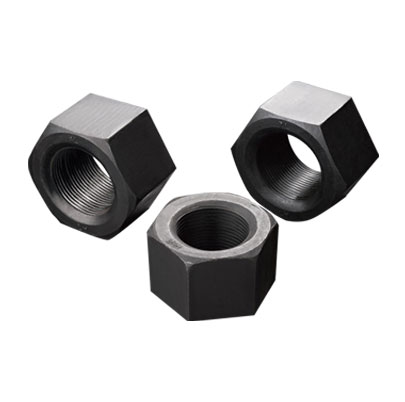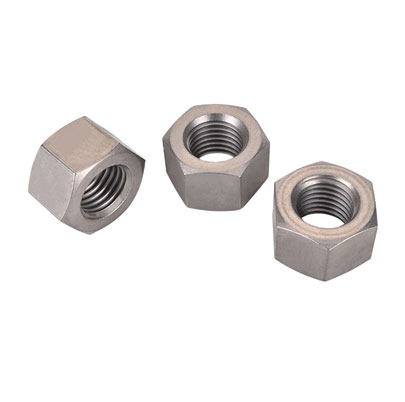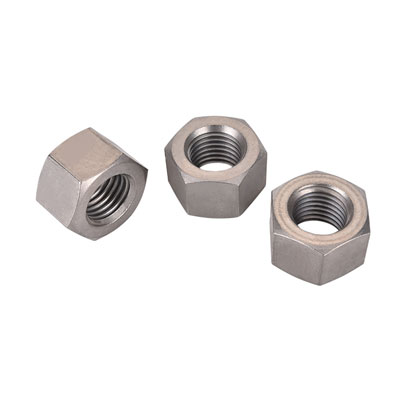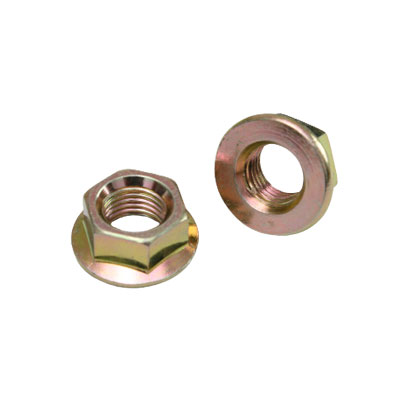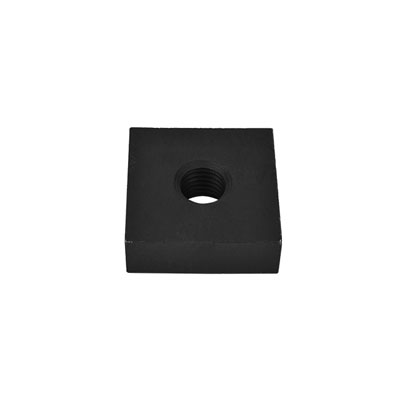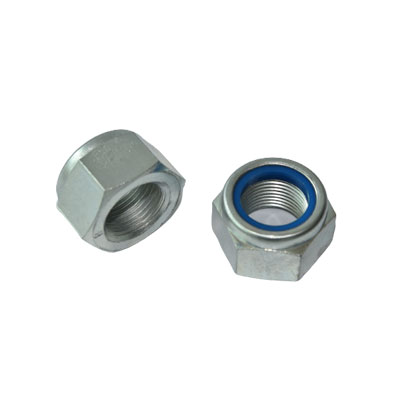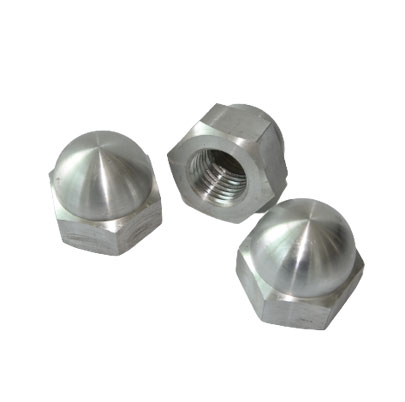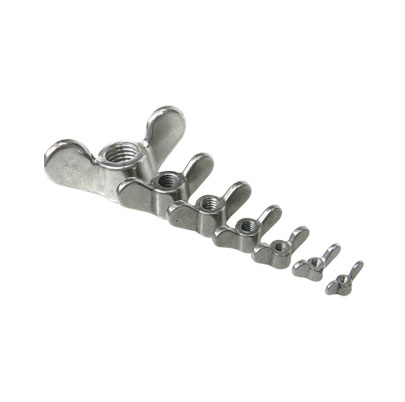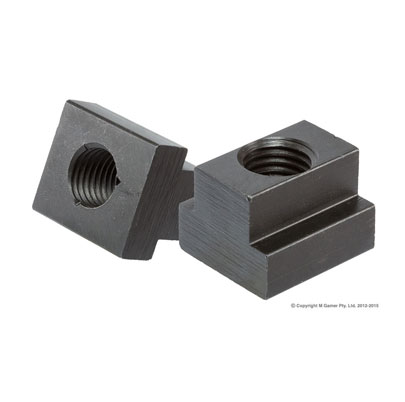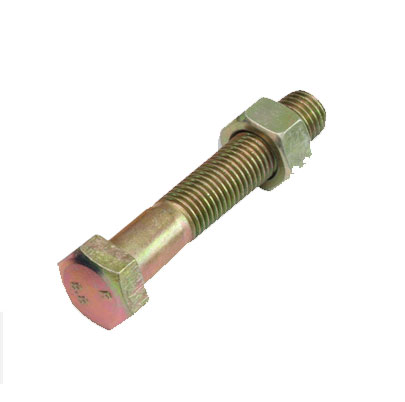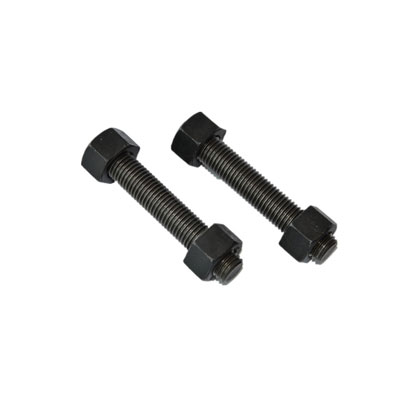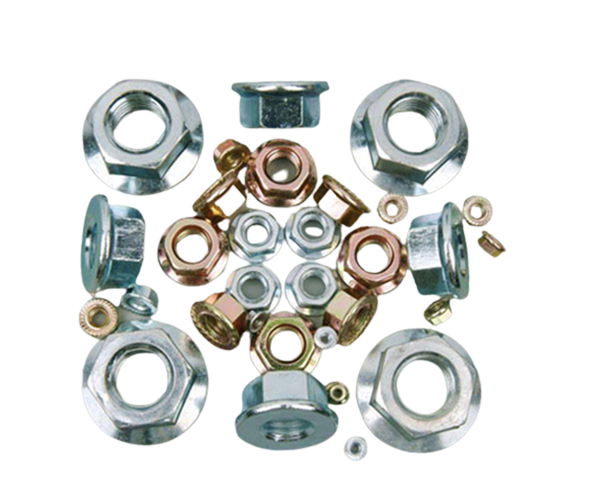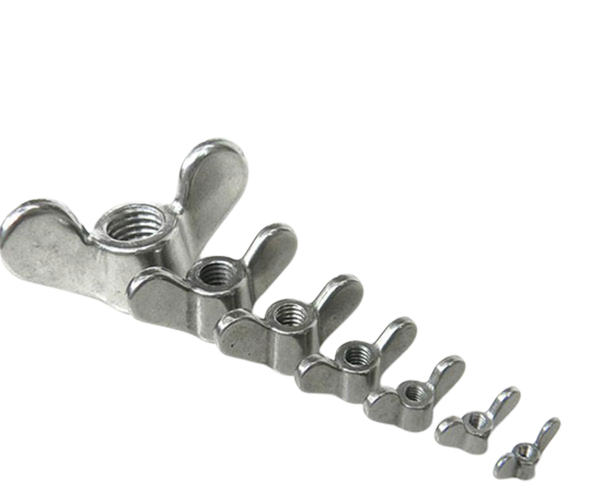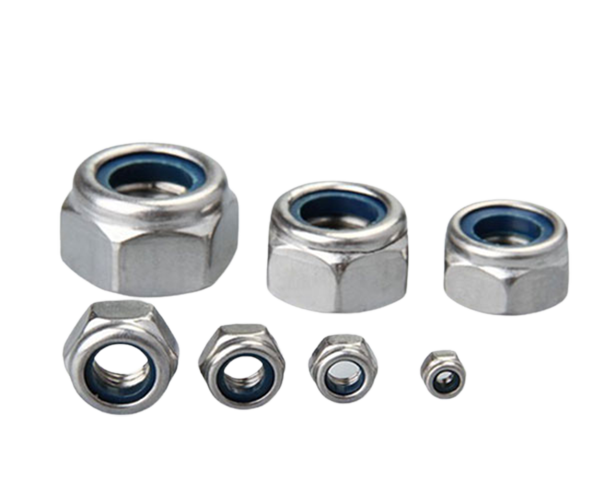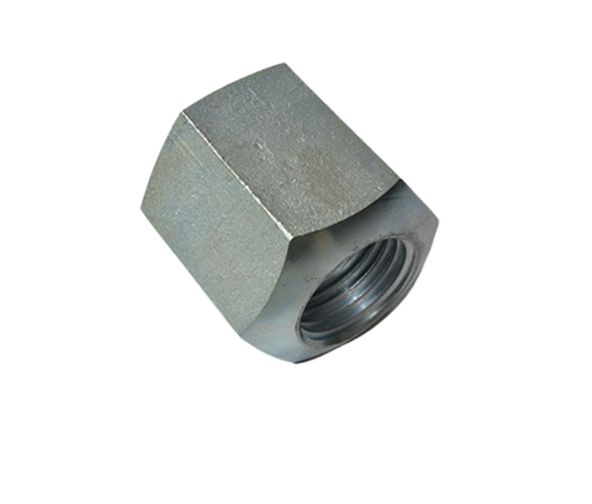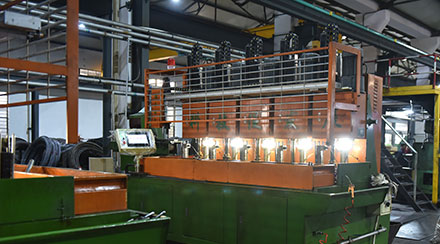A flange nut is a nut with a wide flange on one end that acts as an integral washer. This serves to distribute the pressure of the nut over the part being fastened, reducing the possibility of damage to the part and making it less likely to loosen due to uneven tightening surfaces. These nuts are mostly hexagonal in shape and are made of hardened steel, usually plated with zinc.
In many cases, the flange is fixed and turns with the nut. The flanges may be serrated to provide locking. The serrations are angled so that the nut does not rotate in the same direction as the nut is loosened. Because of the serrations, they cannot be used with washers or on scratched surfaces. The serrations help prevent the vibration of the nut from moving the fastener, thus maintaining the retention force of the nut. Flanged nuts sometimes feature rotating flanges that help create a more stable structure without affecting the finished product like serrated flange nuts. Swivel flange nuts are mainly used to join wood and plastic. Sometimes both sides of the nut are serrated, allowing either side to lock. Self-aligning nuts have male spherical flanges that mate with female dish washers to allow the nut to tighten on surfaces that are not perpendicular to the nut.
Ⅰ. Flange nut uses
The flange nut and the general different types of hex nuts are basically the same in size and thread specification, but compared with the hexagon nut, the gasket and the nut are integrated, and there are anti-skid tooth patterns on the bottom, which increases the nut and the workpiece. Compared with the combination of ordinary nut and washer, it is firmer and has greater tensile force. Generally, the specifications of common flanged nuts are generally below M20. Because most flanged nuts are used on pipes and flanges, they are restricted by the workpiece, and the specifications of flanged nuts are smaller than those of nuts. Some flanged nuts above M20 are mostly flat flanges, that is, there is no tooth pattern on the flange surface. Most of these nuts are used in some special equipment and special places, and the general sales manufacturers do not have stock.
Ⅱ. The flange nut standard dimensions
(1) Material: A3 low carbon steel, 35K high speed steel wire rod, 45# steel.
(2) Hardness grade: grade 4, grade 5, grade 6, grade 8, grade 10, grade 12.
(3) Surface treatment: generally divided into three types: color galvanized, white galvanized, and black galvanized, and generally cold-galvanized.
(4) Main specifications: M5, M6, M8, M10, M12, M16, M20. (M20 and above specifications and M14, M18 flanged nuts are not commonly used)
Flanged nuts are available in iron or stainless steel. But iron is more commonly used. And it can also be electroplated according to the color required by customers. General electroplating treatment has environmental protection and non-environmental protection. Electroplating includes environmental protection color zinc, environmental protection nickel, environmental protection blue zinc, environmental protection black zinc, etc., as well as ordinary electroplating, white zinc, color zinc, black zinc, white nickel, etc.
 English
English
